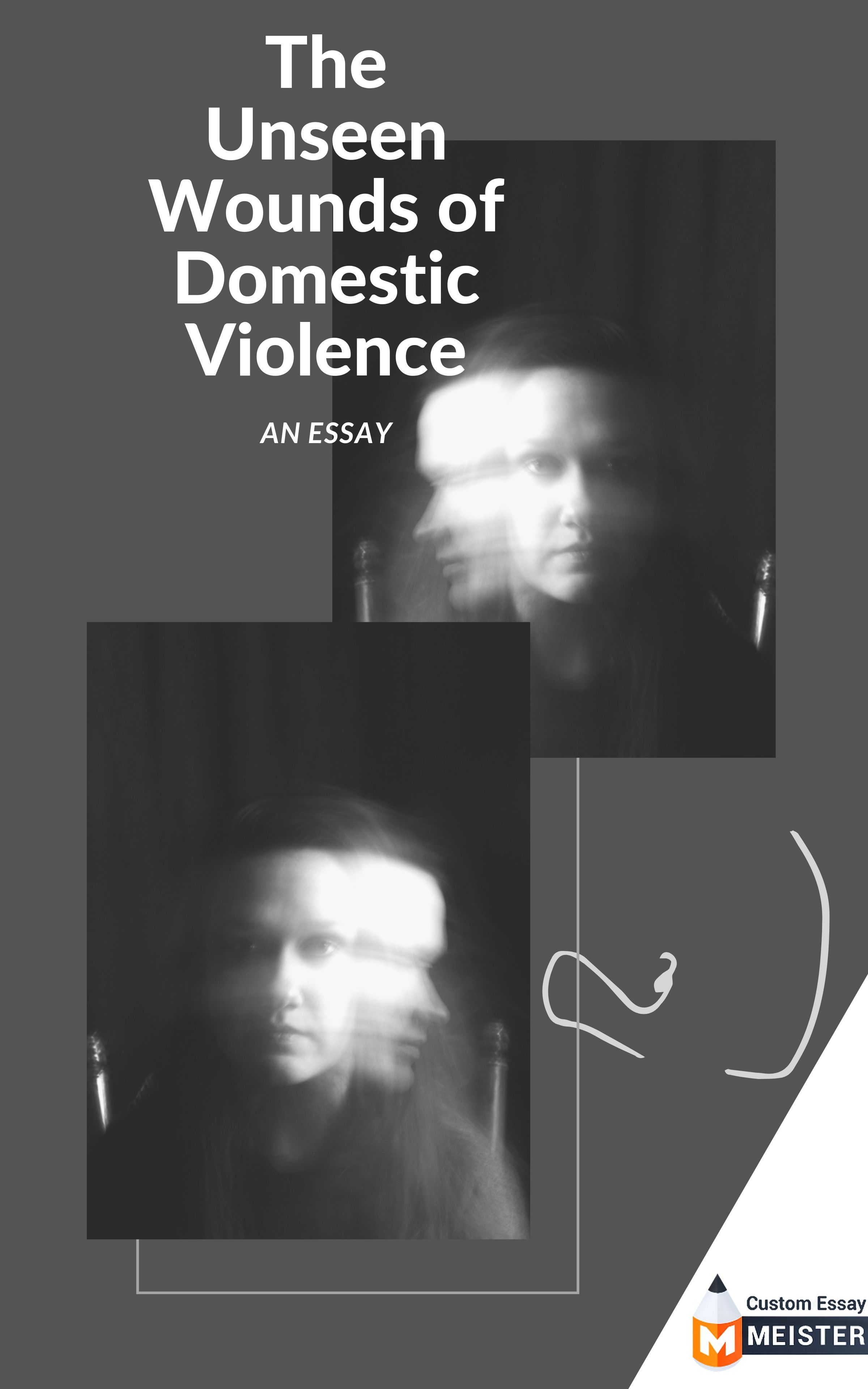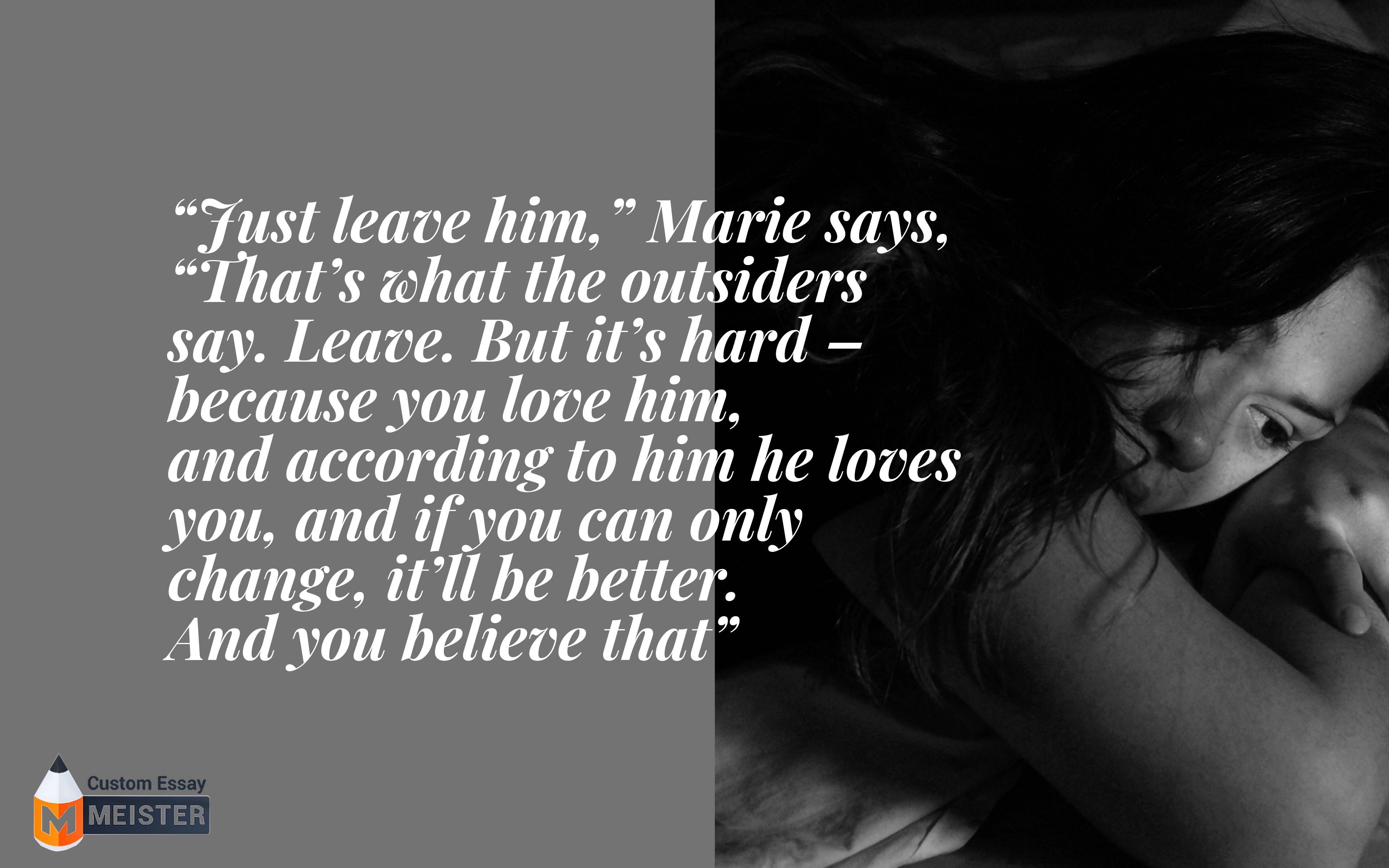Informal Essay Example: Domestic Violence
Tips on how to write an informal essay have already been discussed thoroughly in a previous post, but this informal essay example seeks to deepen the acquired knowledge even further. As mentioned, an informal essay is simply an essay written according to personal preference; its main purpose is to help you practice organization of thoughts, encourage deep introspection and reflection, as well as inspire the proper expression of varying perspectives. Taking cue from its name, an informal essay means you are allowed to forgo making the essay sound more formal , but its informative and substantial nature should remain intact. The topics to best to write about will be according to your taste and interest. If you’re still wondering and in need of understanding how to write an informal essay further, read the sample essay below donated by an anonymous writer:
The Unseen Wounds of Domestic Violence
Marie Stewart is a victim of domestic violence brought about by her husband of 11 years. In the span of those years, she recalls that she attempted to leave too many times to count, but each time, she was emotionally manipulated to come back. Her husband convincingly demonstrates remorse, she recounts, backed up by his desire to “see the children”. Because of these confessions, Marie felt that she had no choice and hoped for the better, but in truth, the situation never improves. It just becomes worse and worse, to the point of life-threatening situations. Marie was one of the lucky ones to escape after her husband attempted to strangle her, which her youngest witnessed and then dialed 911. This occurred as Marie packed her children’s things to finally leave. As soon as her abuser saw her packing, he slammed her into the wall.
The aftermath of Marie’s murder attempt meant bruises, battered, and broken features for her– the obvious signs of domestic abuse. No doubt paramedics tended to her bruises, most of which decorated her arms and neck. Her stomach suffered more blows, and they quickly had to transport her to the emergency room due to internal bleeding. Naturally, these physical injuries demand utmost care and attention, but what many do not see is that there are wounds that run even deeper. Because the truth is, the aftermath of that attempted murder left deep psychological and emotional wounds.
According to the American Psychological Association (APA), psychological trauma is an emotional response to a tragic event, which inhibits with a person’s ability to function normally. The impact of an incident varies depending on the person, of course, but statistics show that most individuals go through augmented levels of emotional distress after the said trauma. These feelings of distress can be alleviated, thankfully, often through support received from family, friends, and professionals.
For victims of domestic abuse and other types of the same degree, the situation’s nature is not always straightforward. There hovers a fear that roots from the possibility of retaliation from the abusive partner, which prevents them from seeking help. Feelings of embarrassment and shame overpower victims, too, prevalent among male victims. All of these make the victim feel helpless, which is furthered by the lack of emotional support. This often leads to anxiety, depression, fear, social withdrawal, PTSD, and even suicidal ideations.
From this alone, it is clear that the invisible wounds, psychologically and emotionally, brought about by domestic violence are beyond devastating. It tends to stay with the victim, to haunt and rob many years of their lives. No equipment can detect these injuries, and oftentimes they go unnoticed and worse, untreated. Although the violence has stopped and the abuser is sentenced to jail, it lingers on.
Oftentimes, the victims get lured into a promising relationship. The beginning holds the promise of a fairy tale coming true, but the colors get darker as the story progresses. Blinded by the romanticized idea of love, they stay through the “trials” because that’s just how love works, right? By the time the victim realizes what’s happening, the dark pit is already much too deep to climb out of. “Just leave him,” Marie says, “That’s what the outsiders say. Leave. But it’s hard – because you love him, and according to him he loves you, and if you can only change, it’ll be better. And you believe that”.
And this holds true for many women, but to help them empower themselves, especially early on, the National Center for PTSD has identified several scenarios that indicate red flags in a harmful relationship. An abusive partner has the characteristics listed below:
- Has total control of family finances
- Limits or severs the other partner’s social ties
- Constantly threatens to ruin the reputation of the partner
- Repetitively attempts to scare the other by through physical violence – breaking things, punching walls, hurting pets, etc.
- Gaslighting, or the systematic attempt to guilt shame the other
Statistics further show that on average, a woman pushed through 37 cases of all cases of abuse before they finally decide to leave, as with Marie’s 11 years of hell. Only then when she was gasping for air that she truly realized what kind of monster her husband had become, and that she should have left all those years ago. According to her, your relationship becomes sacrosanct especially after marriage, and with children, you will want to hang on to that at all costs. There’s already been a ton of investment in every aspect, and the notion of leaving all that behind seems ridiculous, even if the relationship is dysfunctional. Having shared a home and exchanging love and trust, Marie found it hard to truly walk away. There are children, fruits of love, and a shared life. Be it three months or 11 years, the investment is indubitable – Marie certainly felt this way.
Another aspect of domestic violence cases is the erosion of the victim’s self-esteem. The reason why an abuser’s power is so effective is because they first breakdown what gets in the way – yourself. It can happen quickly, but often times it’s long and slow. Marie, an intelligent young nurse, disintegrated over the course of her marriage, turning into a shell of her former self. She quit working as a nurse and became a housewife, something which she never would have done; her friends and family knew of her dream to become a doctor.
Victims forget who they are. They have trouble leaving the house, for leisure or other activities, it doesn’t matter. The little hobbies like cooking and dressing up just get lost in translation – and they just lose a sense of themselves.
Marie, along with countless of survivors, urge victims to reach out and talk about your fears. Your closest friends will do, and this action must start the moment you feel like something isn’t right anymore. Questions, too, open up plenty of opportunities. Another survivor of domestic violence is Hannah, a medical student. She recounts all the time she has lived as if floating through life, sporting bruises she tried desperately to cover up. One time, her partner punched her so hard in the face that it left a nasty bruise, which prompted her to go to the local store for makeup. The salesclerk stared at her bruise, expressed discomfort, but said nothing. “At the time,” Hannah said, “I wished she asked me where I got it from.”
Part of the battle against domestic violence is empowering women to jump away and escape. While they may finally gain the sense to conclude that the situation is wrong, again, there are plenty of factors that hold them back. Sometimes stepping up to help, or pointing something out, can help them empower themselves. The biggest barrier to seeing that light at the end of the tunnel is the lack or absence of support.
And once they power through, you must not let go of their hand. Part of the battle is the recovery, and the unseen wounds of domestic abuse is hard to patch up. The tools to helping a victim of domestic violence is patience and understanding. With no medicine to administer cure, time remains to be the only antidote. Marie, although free from her violent husband, still tends to her wounds. But with a new loving partner, along with her family and friends who ran to her the day she was strangled, she is slowly healing.
An essay writing service for students
One key thing to remember about domestic abuse victims is that they lose their own voices. While many of them overcome their traumatic experiences and move on, plenty still fall prey into their own wounds. Many fall victim every day, and victims live through abuses for years. This is why those who have recovered use their newly-formed voices to speak for those who can’t – some speak addressing audiences, some resort to art, and others write. We at CustomEssayMeister understand the power that writing can hold – and it is through this very reasoning why we continuously try to feature their stories of utmost importance. Many people suffer from other forms of violence, too, and sometimes abusers come in the form of systems. Some students go through abusive educational systems, so many turn to academic writing services like ours for help. Through our professional writers’ knowledge and skills, our essay writing services are able to produce custom essays and custom research papers, to name a few. In turn, we hope that we are playing our part to help.

